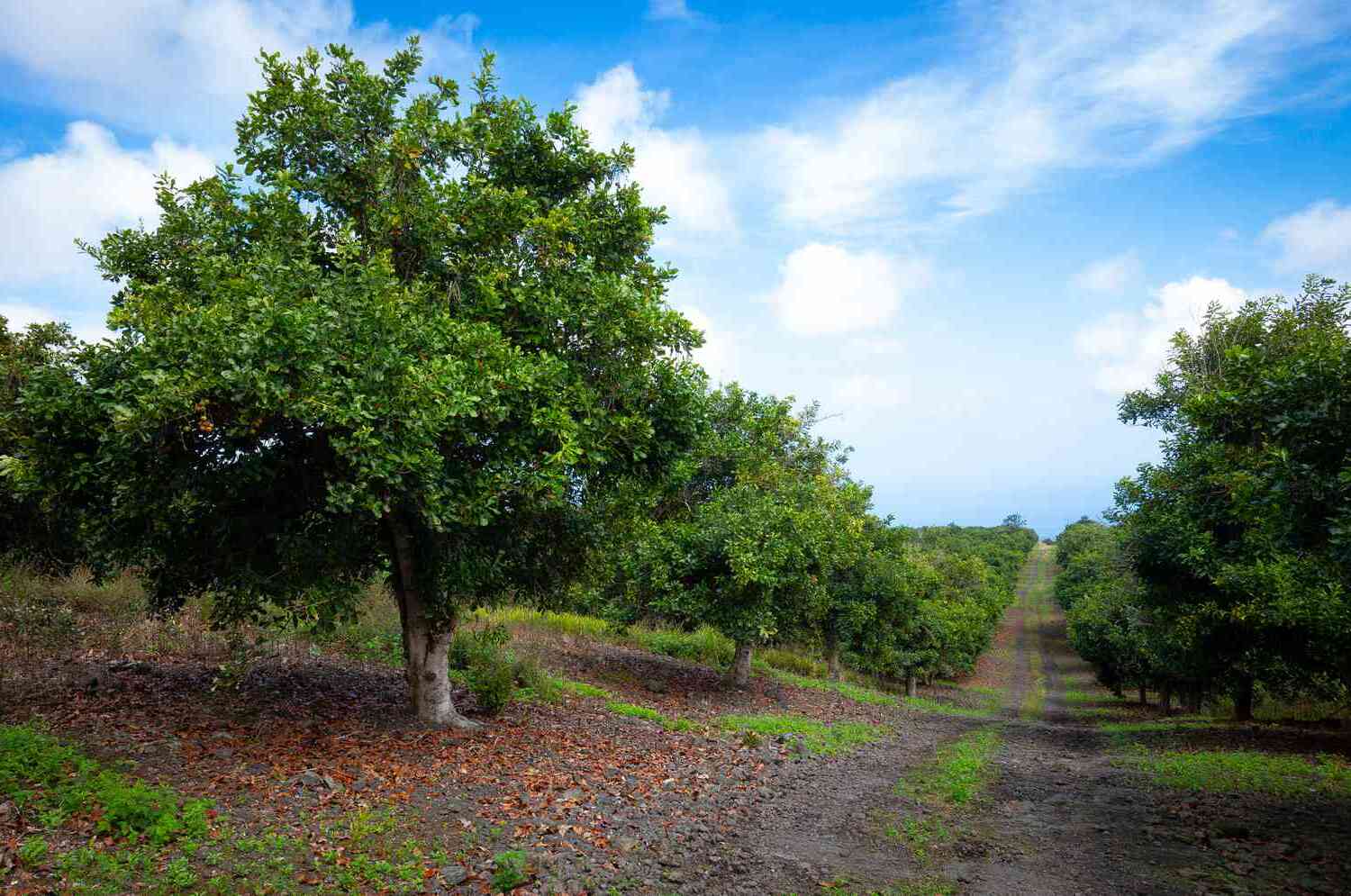
Did you know that the macadamia tree, native to Australia, produces one of the world's most luxurious nuts? These trees can grow up to 40 feet tall and live for over 100 years. Macadamia nuts are not just delicious; they are packed with healthy fats, vitamins, and minerals. The tree's leaves are glossy and dark green, providing a lush canopy. Interestingly, it takes about 7 to 10 years for a macadamia tree to start producing nuts. These nuts are encased in a hard shell, making them one of the toughest nuts to crack. Farmers often use specialized equipment to harvest and process them. Macadamia trees thrive in tropical climates, requiring well-drained soil and plenty of sunlight. Their flowers are small, white, or pink, and grow in clusters. Curious to learn more? Keep reading to uncover 25 fascinating facts about the macadamia tree!
Origins of the Macadamia Tree
The macadamia tree, known for its delicious nuts, has a fascinating history and unique characteristics. Let's dive into some intriguing facts about this remarkable tree.
-
The macadamia tree is native to Australia, specifically the rainforests of Queensland and New South Wales.
-
Indigenous Australians have been consuming macadamia nuts for thousands of years, long before they became a global delicacy.
-
The tree was named after John Macadam, a Scottish-Australian chemist and politician, by botanist Ferdinand von Mueller in 1857.
Growth and Cultivation
Understanding how macadamia trees grow and are cultivated can give us a deeper appreciation for these nut-bearing giants.
-
Macadamia trees can grow up to 40 feet tall, making them quite impressive in size.
-
These trees thrive in subtropical climates with well-drained soil and plenty of rainfall.
-
It takes about 7 to 10 years for a macadamia tree to start producing nuts, requiring patience from growers.
-
Once mature, a single tree can produce up to 50 pounds of nuts annually.
Nut Characteristics
The nuts themselves are what make the macadamia tree so special. Here are some facts about these tasty treats.
-
Macadamia nuts have the hardest shell of any nut, requiring significant force to crack open.
-
They are rich in healthy monounsaturated fats, which can help reduce bad cholesterol levels.
-
These nuts are also a good source of fiber, vitamins, and minerals, including magnesium and manganese.
-
Macadamia nuts have a creamy, buttery flavor, making them a popular ingredient in both sweet and savory dishes.
Economic Impact
The macadamia tree has a significant economic impact, especially in regions where it is cultivated.
-
Australia remains one of the largest producers of macadamia nuts, alongside South Africa and Hawaii.
-
The global macadamia nut market is valued at over $1 billion, reflecting its popularity and demand.
-
Macadamia farming provides employment for thousands of people worldwide, from growers to processors.
Environmental Benefits
Beyond their economic value, macadamia trees offer several environmental benefits.
-
These trees can help prevent soil erosion due to their extensive root systems.
-
They also contribute to carbon sequestration, helping to mitigate climate change.
-
Macadamia trees provide habitat for various wildlife species, promoting biodiversity.
Culinary Uses
Macadamia nuts are versatile in the kitchen, adding flavor and texture to numerous dishes.
-
They are commonly used in baking, especially in cookies and cakes.
-
Macadamia nuts can be roasted and salted for a tasty snack.
-
They are also used to make macadamia nut oil, which is prized for its high smoke point and rich flavor.
Health Benefits
Consuming macadamia nuts can offer several health benefits, making them a nutritious addition to any diet.
-
The high content of monounsaturated fats in macadamia nuts can support heart health.
-
They contain antioxidants that help protect cells from damage caused by free radicals.
-
Regular consumption of macadamia nuts may aid in weight management due to their satiating properties.
Fun Facts
Here are some fun and lesser-known facts about macadamia trees and nuts.
-
Macadamia nuts are toxic to dogs, so keep them out of reach of your furry friends.
-
The shells of macadamia nuts are used in various industrial applications, including as a biofuel and in the production of particleboard.
The Final Nut
Macadamia trees are more than just a source of delicious nuts. They play a vital role in agriculture, offer numerous health benefits, and have a fascinating history. From their origins in Australia to their spread across the globe, these trees have made a significant impact. Their nuts are packed with nutrients, making them a healthy snack choice. Plus, the trees themselves contribute to environmental sustainability by improving soil quality and providing habitat for wildlife.
Whether you're a fan of macadamia nuts or just curious about nature, there's no denying the importance of these remarkable trees. So next time you enjoy a handful of macadamias, remember the incredible journey from tree to table. These facts highlight just how special macadamia trees are, and why they deserve our appreciation. Keep exploring and learning about the natural world; there's always something new to discover.
Was this page helpful?
Our commitment to delivering trustworthy and engaging content is at the heart of what we do. Each fact on our site is contributed by real users like you, bringing a wealth of diverse insights and information. To ensure the highest standards of accuracy and reliability, our dedicated editors meticulously review each submission. This process guarantees that the facts we share are not only fascinating but also credible. Trust in our commitment to quality and authenticity as you explore and learn with us.
